More than six years have passed since the launch of the 1More Quad Driver in early 2017. Since then a lot has changed and we went from a world where wired earphones were normal to one where they almost disappeared. This is because “true wireless” earphones have become dominant, mostly thanks to the convenience of not having cables. And yet, there is still a strong demand for high-quality wired earphones and this is exactly the market 1More intends to address with the new release. The company has spent many years trying to perfect their new earphones, the 1More Penta Driver. The result is one that showcases the technical achievements of the company, as the Penta Driver employ four internally-developed planar drivers, but overall it is a bit of a mixed bag due to the acoustic characteristics of said drivers.
Disclaimer: I received a free unit directly from 1More. They sell the Penta Driver for $159. Additional info on their website.
TL;DR: recap
| Pros |
Cons |
| + Very comfortable
+ Good level of detail + MMCX connectors allow to replace the cable |
– Very imbalanced tuning, with lots of piercing treble spikes
– Low passive isolation – It can be difficult to get proper seal with stock tips |
Rating: 5.5/10
Packaging & Accessories
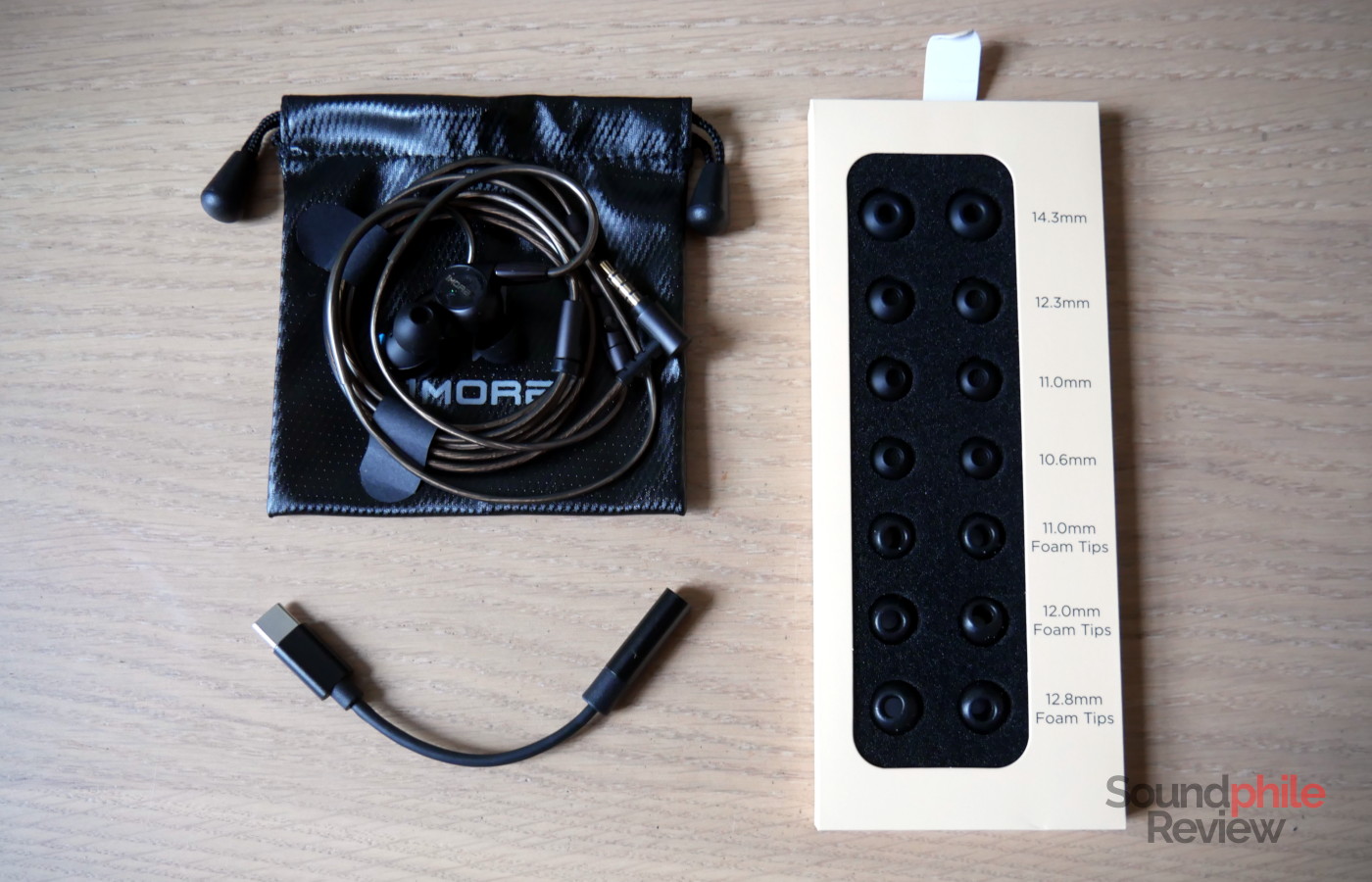
The 1More Penta Driver come, as usual for the company, in a book-like cardboard box. Once you open it, a transparent plastic window covers the earphones. The accessory set is quite large and includes a drawstring pouch, a USB to 3.5 mm adapter (with no integrated DAC, so your device needs to support audio output from the USB-C port), a set of eartips (five sizes in silicone, three sizes in foam) and a manual.
Design & Comfort
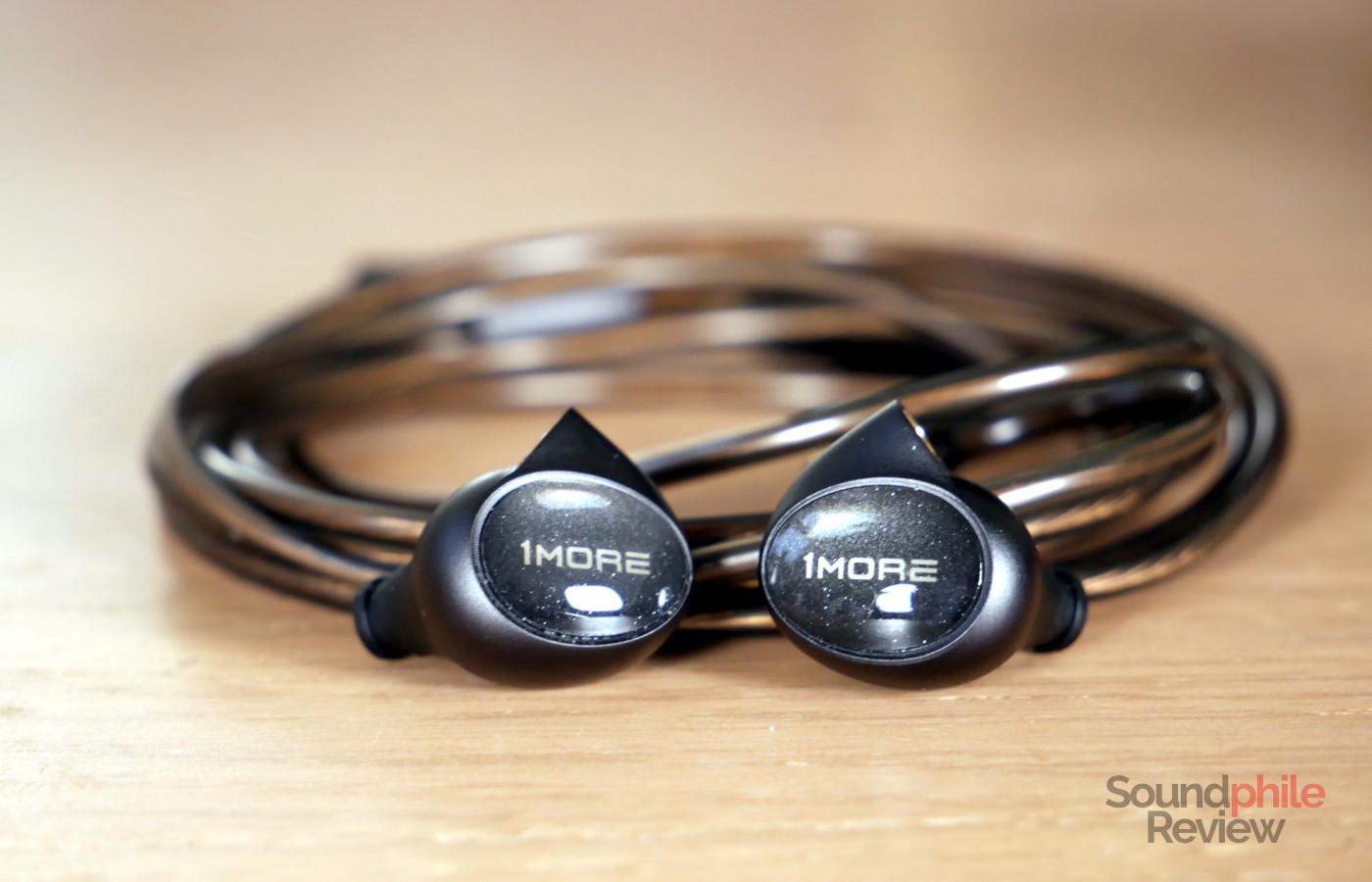
The 1More Penta Driver signal a clear departure from previous designs by 1More. Whereas the Triple Driver and the Quad Driver were “traditional” earphones with the cable dangling from the earpieces, the Penta Driver have an IEM-like design with an around-the-ear cable. The shells themselves are therefore quite different from previous models.
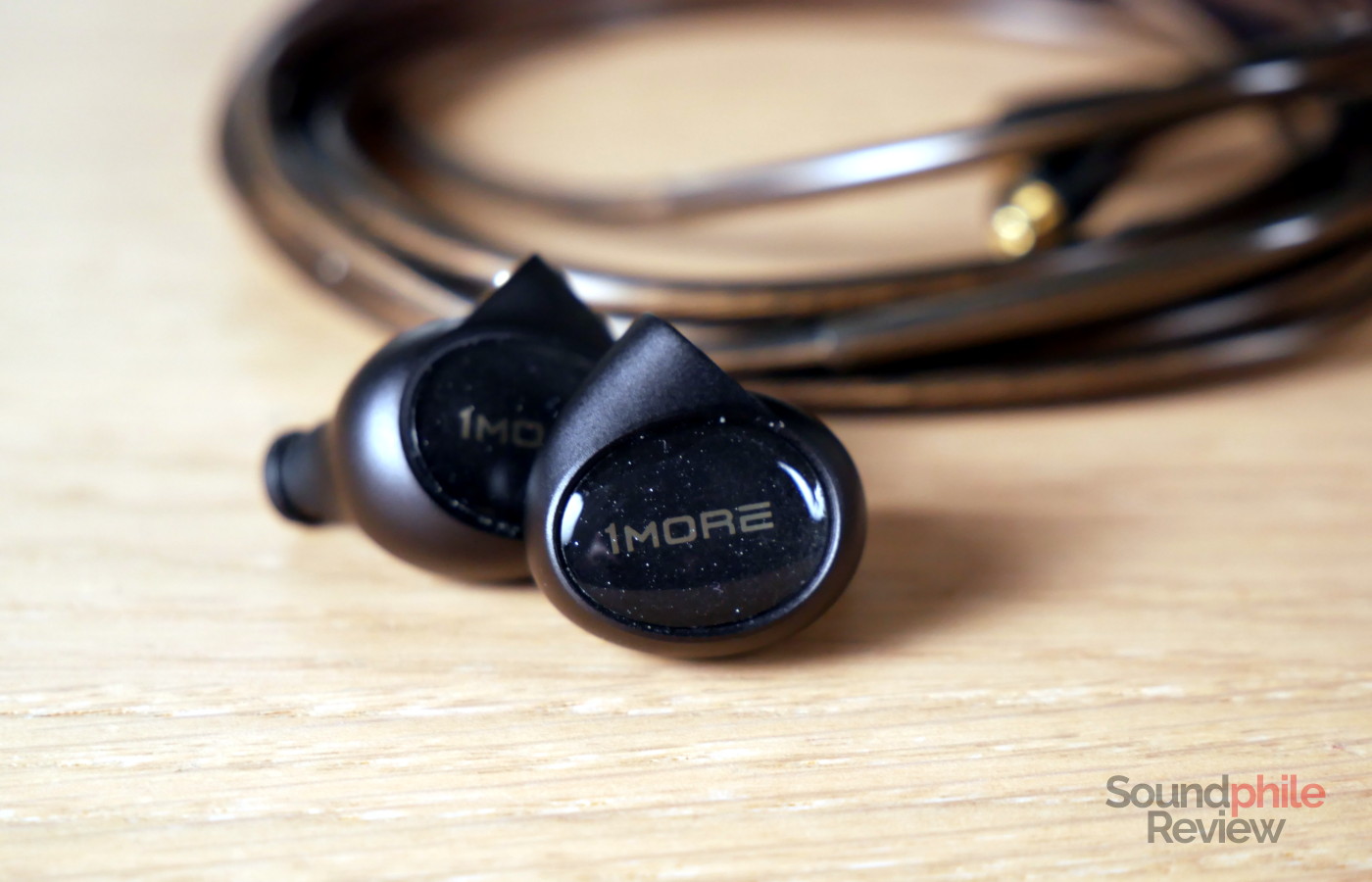
The shell itself is made of aluminium, while the faceplate is made of transparent plastic and it creates a lens effect on 1More’s logo with a glittery background. Overall the build quality is that which we have come to expect of 1More, which is to say it’s very very high.
Comfort is truly amazing, thanks to the fact that the Penta Driver are small, rounded and very light. It’s almost like they’re not in my ears when I wear them. Considering how small they are, I would wager that even people with small ears would find them comfortable.
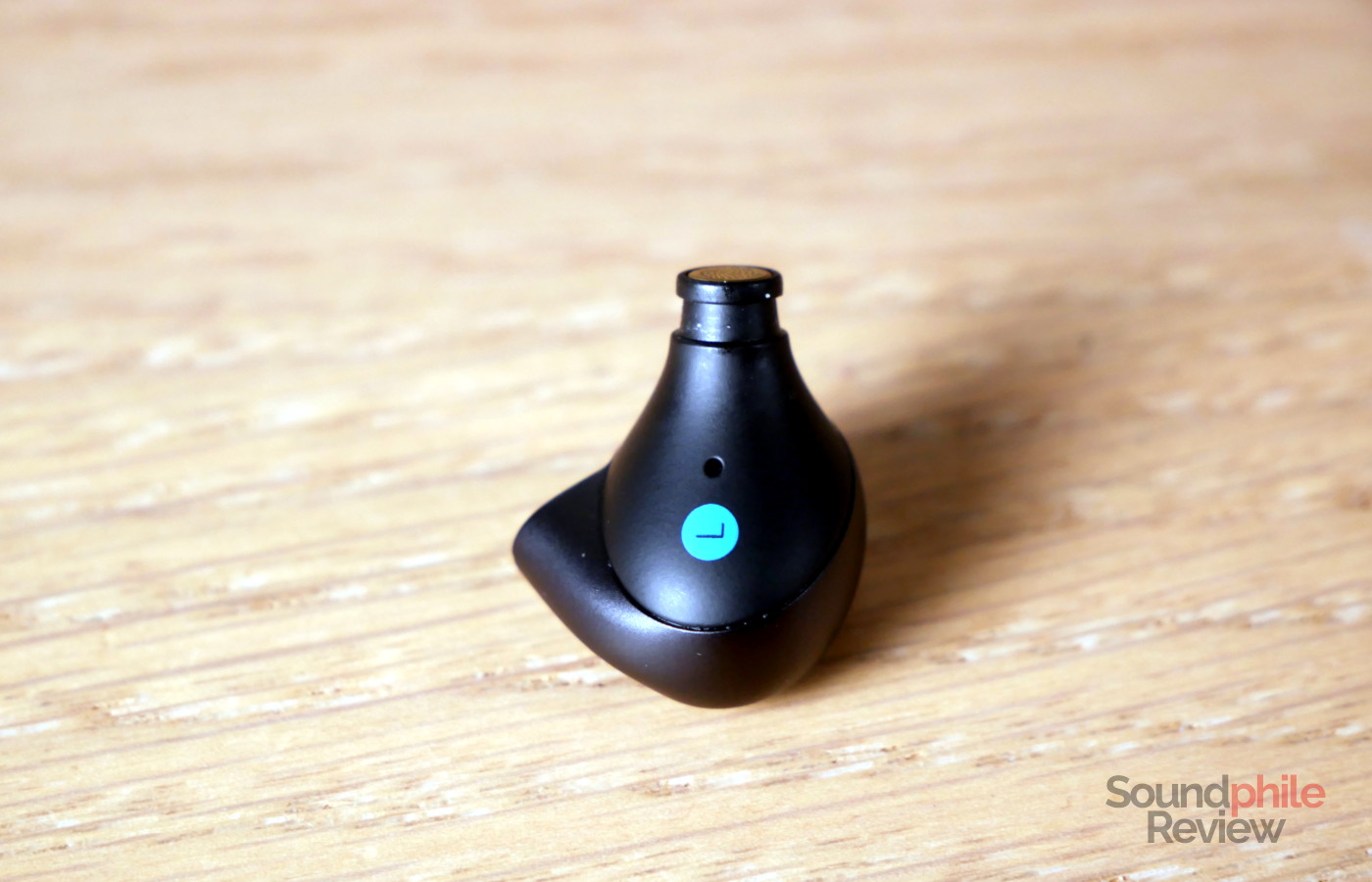
Isolation is only sufficient, in the sense that it is enough to reduce the noise from my mechanical keyboard as I am typing this to the point it’s barely a whisper, but it is not enough to shield me from louder noises and, in fact, it doesn’t block enough noise to make the earphones usable in noisy situations (e.g. on public transport).
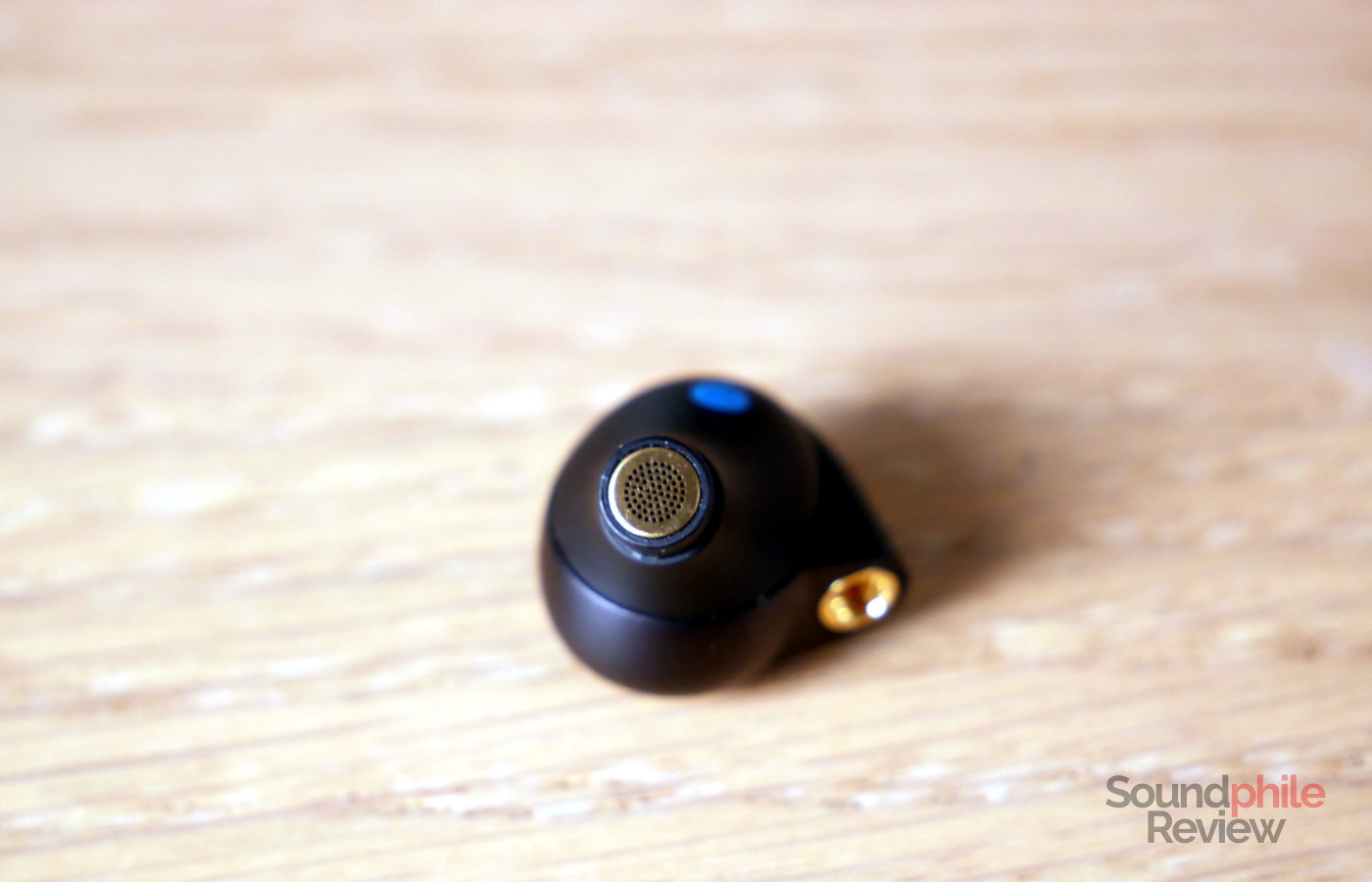
One thing I found is that the eartips provided by 1More are not sufficient to provide a good seal, at least not with ease: I had to push the earphones quite deep in my ear canal and find the right spot to get a decent seal, and even then it’s highly unstable. Even the largest ones are too small for my ears, so I had to try others (like the SpinFit eartips, as an example); using those I can get a much better and consistent seal.
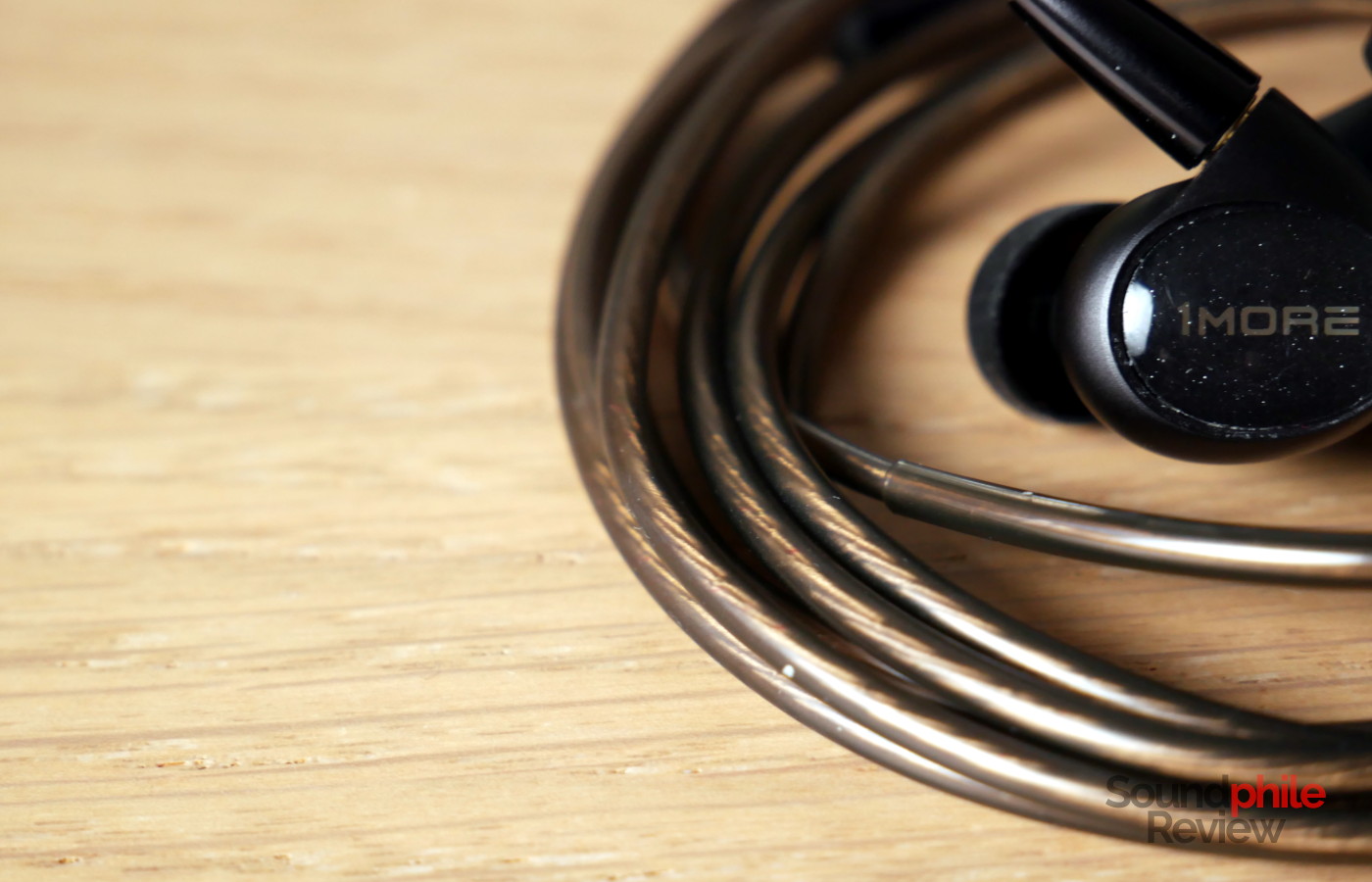
The cable is very thin, but it looks and feels resistant enough. The plastic sleeve is dark brown with a bit of transparency that allows you to see the cable inside. It tends to keep coiling as that was imparted during packaging, so it’s very hard to make it straight. It has a chin slider as well as an in-line remote with a microphone, so you can manage calls with the earphones as well. It should be noted that the Penta Driver are the first earphones by 1More with MMCX connectors, which means you can use other cables as well.
Sound & Specs
I have tested the 1More Penta Driver using an SMSL DO400 and an SMSL C200.
1More Penta Driver |
| Frequency response | 20 – 40,000 Hz |
| Impedance | N/A |
| Sensitivity | N/A |
It is quite interesting to note that 1More developed its own planar technology in-house. Whereas other manufacturers decided to use planar drivers to cover the full spectrum, by using rather large diaphragms, 1More went the opposite way and decided to use small diaphragms that could cover the upper end of the spectrum. This is why we see five drivers in each earpiece: the four planar drivers are used as if they were balanced armatures, and in exploded views of the earphones those drivers look in fact exactly like BAs. This is quite interesting from a technological standpoint as it shows the variety of approaches we still have on the market.
The problem is, though, that not all that glitters is gold, as the saying goes. The four planar drivers engineered by 1More have in fact very significant spikes that happen between 5 kHz and 15 kHz, with a very steep slope after that that leaves almost no presence in the upmost region. The peaks, one per driver, are larger than 5 dB and are immediately spotted in any track which features cymbals and crashes, as those sound very aggressive and piercing. Treble is already emphasised, even if we ignore the peaks, but those only make things worse by further bringing treble to the fore and making it the loudest area by some margin, therefore covering up everything else.
The product of this is that the sound as a whole is therefore not just bright, but very thin, with a lot of emphasis on the breathing nature of voices and the sibilants, as well as on the upper, strident component of instruments like violins, electric guitars and trumpets. Female voices are emphasised especially in their upper component, whereas male voices lack body and presence; in Fleetwood Mac’s The Chain the chorus is overly high-pitched, while Jim Morrison’s voice in Roadhouse Blues is shifted towards the higher registers.
And this is a shame, because the upper mids and treble cover up a lower region which is actually quite well done. Sub-bass extends quite deep and would give the earphones a great foundation, but it is too shy compared to the rest to emerge clearly – unless you really push on the volume, though that also means making the treble really fatiguing. Speed is very, very good, with rapid decay which gives transients a very good attack, and layering is good as well, which in turn allow for a good amount of details to emerge.
When we look at technicalities, soundstage has good width but low depth; this means that the sound appears to move in a relatively large space which extends at both sides, but with little space in front of the listener. Imaging is quite “polarised”, as most instruments are placed at the extremes and rarely at the centre. Instrument separation is, as could be expected, massively influenced by the tuning and is therefore sufficient at best.
Final Thoughts
Sometimes less is more. The now old Quad Driver was a success and for good reason: it brought high-quality sound to a price which, at the time, was unheard of (pun intended) for the performance on offer. The Penta Driver are not without their merits, but they miss the target when it comes to tuning. The experiment with the planar drivers shows that 1More has a lot of technical prowess (something we actually already knew!), but ironically I think it is those very drivers that needed more tuning work as they are the reason behind the fatiguing peaks in the signature.
The addition of MMCX connectors, the more classic IEM shape, the incredibly light weight are all very good additions that the Penta Driver bring to the table. The level of detail is also commendable and so is the instrument separation. That said, the large imbalances in the tuning will make these earphones appeal to far fewer people than their predecessors. Considering this model has been in the works for several years (there were rumours about them back in 2018!), it is a shame that the final result has such issues and hopefully the company will release another model with a more balanced tuning in the future.

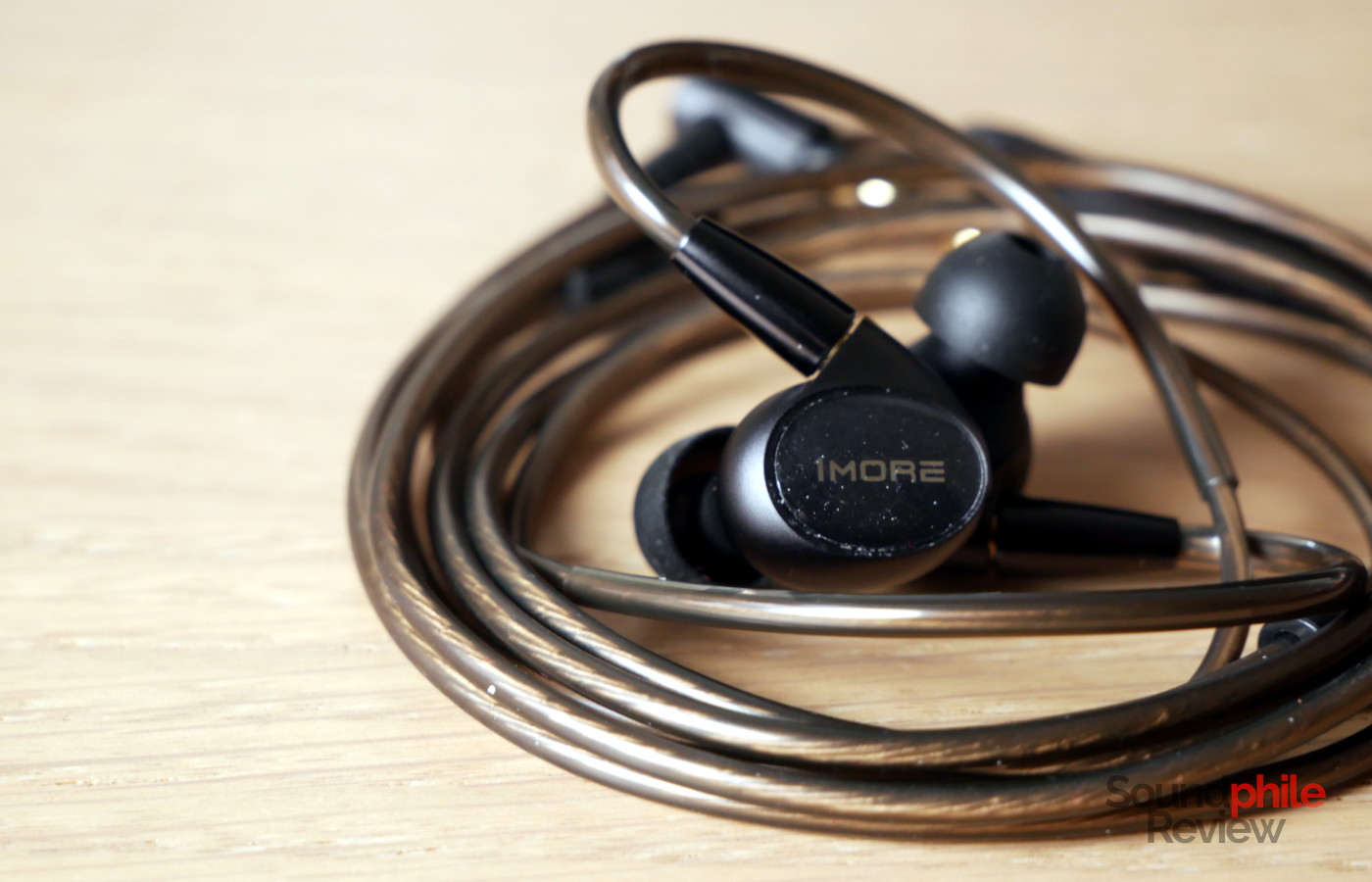


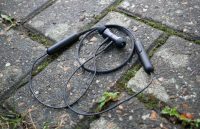
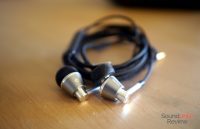



I think you made a mistake.
The included USB to 3.5mm adapter, HAS INTEGRATED DAC.
In fact… it’s a CX31993 HIFI DAC, great power, great sound quality, one of the best DACs on the market.
You can add audio to any USB powered device, even if the device doesn’t have audio circuitry.